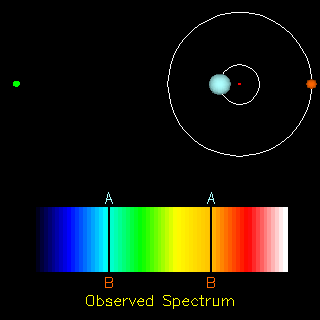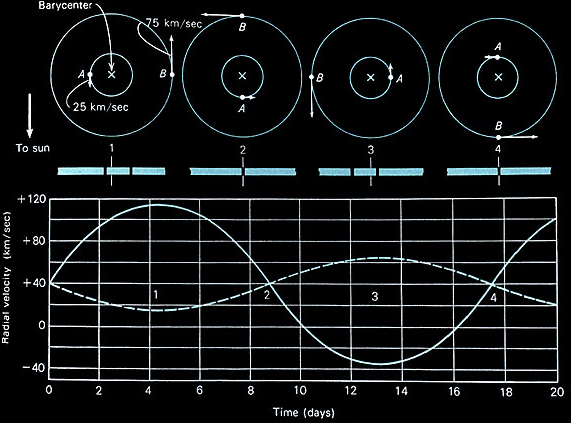| spectroscopic binaries |
|
|
| Visually unresolved doubles may still have their binary nature revealed through the periodic shifts in the positions of the spectral lines from the two stars, as shown in the spectra and animation below. |
 ©AESO  ©Richard Pogge (OSU) | |
|
| The line shifts are caused by the Doppler effect, as the stars alternately approach and recede from the Earth in their orbital motion around the binary centre of mass. |
|
| Measurement of the Doppler shift as a function of time gives the radial velocity curve, as shown in the schematic below. In double-lined spectroscopic binares it is possible to measure the radial velocity curves of both components, whereas in single-lined spectroscopic binaries only one of the radial velocity curves is measurable. |
 ©AESO |
|
|
| About 1500 spectroscopic binaries have accurately measured radial velocity curves for both components. Without a knowledge of the inclination of the orbital plane, however, which can only be determined from eclipsing binaries, we can only calculate the ratio of stellar masses from (double-lined) spectroscopic binaries. Quite useful statistical information can still be obtained, however, by assuming that the inclinations are randomly distributed. |